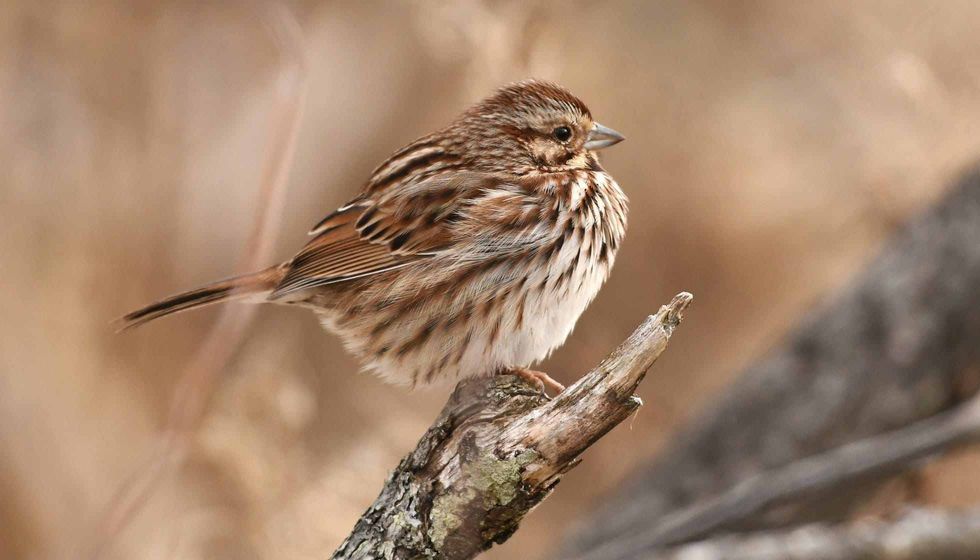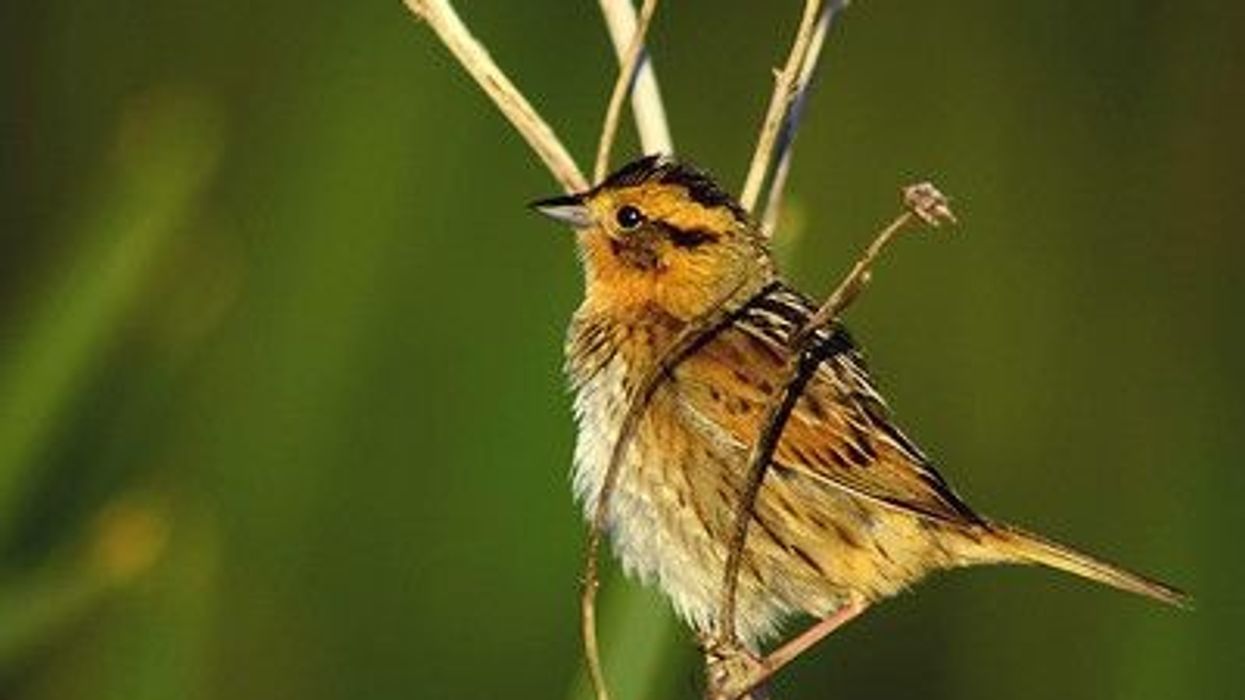Do you like learning about different birds? Then you will enjoy learning about the song sparrow.
The song sparrow is an adorable bird to learn about. Interestingly, some of the members of this bird family are non-migratory, whereas others are migratory. As a result, the migratory birds have a separate habitat for the mating season that differs from their winter range.
Their mating ground and winter ground are primarily situated in North America, i.e., the Pacific Northwest region, the U.S. (United States) Canada. Compared to the Pacific Northwest region, their winter ground is located in Mexico.
In winter, they can be seen in marshes. However, the marsh is not a suitable habitat for them in the summer. They can be seen on islands, on the edges of ponds or rivers, and on any other open ground during the summer.
They prefer to stay on the edges of water bodies because these areas provide them with abundant food. Such food includes seeds, wild berries, and other food required by the song sparrow to sustain their life.
Keep reading to know more about these birds. For similar content, check out the monk parakeet and spotted towhee.
Song Sparrow Interesting Facts
What type of animal is a song sparrow?
The song sparrow (Melospiza melodia) is a type of bird.
What class of animal does a song sparrow belong to?
The song sparrow belongs to the class Aves.
How many song sparrows are there in the world?
The number of breeding song sparrows worldwide is estimated to be 130 million by Partners In Flight. Out of these 130 million, 88% can be spotted in the United States in North America during some time of the year.
On the other hand, 42% of the breeding population can be seen in Canada, while Mexico hosts 6% of these birds for a given duration within a year.
Where does a song sparrow live?
The population of these birds is not that widespread. The song sparrow mostly hails from North America.
The North American countries that are home to these birds are the United States (U.S.) or America, Mexico, Canada. In the United States, thing sparrows can be spotted in New York, the Pacific Northwest range, and the San Francisco Bay range, and California among others.
Song sparrows are also native to the range of the Great Lakes and even Mexico.
The Aleutian Islands in Alaska also host these birds. Although song sparrows are not generally residents of Europe, some were spotted in Great Britain and Norway.
What is a song sparrow's habitat?
Song sparrows are residents of terrestrial and temperate habitats. Some populations of the song sparrows are migratory whereas some are not.
Hence, they are termed as partially migratory species. The breeding grounds are home to both non-migratory and migratory populations. In this range, the song sparrows inhabit areas on the banks of rivers, ponds, or streams.
Their habitats also include open areas such as grasslands, woodlands, thickets, and old pastures that are no longer in use. On the other hand, the range of the winter habitats of the migratory birds comprises piles of brushes, ravines that are damp, marshes, and fields of weed.
These birds can also be spotted in chaparrals. Chaparral is a range of habitats near sandy beaches. These are generally covered in thick spiky bushes.
Forests and scrublands also fall under the habitat of these birds. Song sparrows mostly inhabit a range that is situated in or near agricultural or suburban areas or a range that is adjacent to a water body.
Who do song sparrows live with?
These North American birds are largely solitary in nature. This means that the song sparrows generally live alone and cannot be seen gathering in large groups or flocks. They can however be seen pairing up during the mating season.
How long does a song sparrow live?
The average lifespan of a song sparrow is unclear. It is said that the majority of these birds breathe their last after completing the first year of their lives. However, the longest living song sparrow survived for 11 years and four months.
How do they reproduce?
Song sparrows attain sexual maturity at the age of one year. They are primarily monogamous birds, meaning mostly they mate with only one partner.
The breeding season continues from April till August. For the migratory song sparrows, males of the species fly to the mating grounds prior to their female counterparts. In order to mark their territory, the males flap their wings, puff the plumage on their chests, and sing.
While the males show aggressive and territorial behavior to make their identities known, the females mark their identity by giving out either a nasal or a fairly high-pitched sound. The female takes her pick from the males based on his territory.
The males show interest by hopping near the female they are attracted to. After a pair forms, the female builds a nest. It takes her 5-10 days to build the nest.
The nest is built with weeds, pieces of tree bark, roots, and dead grass. It is in this nest that the female lays three to five eggs.
The eggs are bluish-green or pale blue in color. The eggs are spotted as well. The incubation periods range from 12-14 days where the females sit in the eggs to incubate them.
Following this, young ones hatch from the eggs. It takes 18-20 days for the young ones to be independent.
What is their conservation status?
As per the International Union for Conservation of Nature (IUCN) Red List, these birds have the status of being a species of Least Concern. They have steady numbers even though they do not have a widespread range.
Song Sparrow Fun Facts
What do song sparrows look like?
The plumage shows a streaked pattern when it comes to the physical appearance of the song sparrow. Song sparrow's streak has a center which is known as the streak pin. This is the starting point of all the stripes or streaks.
The streak pin is located on the chest of this bird. Its head is brown and has a crown-like appearance with gray and white stripes. The area around the eyes is similarly streaked.
The rounded tail of these birds is reddish-brown in color, while the beak is dark brown. The rounded tail and wings are dark or russet brown in color. Their underparts are pale or white-colored.
How cute are they?
The song sparrows are very cute in appearance. They have a fluffy and petite body which makes them look adorable.
How do they communicate?
Sound, touch, and sight are the communication modes used by the song sparrows. Like most other animals, song sparrows can perceive through chemical signals.
These North American birds primarily use songs or other vocalizations coupled with their body language, in order to communicate. Their moods and behavior can be deciphered with the help of their varied songs and calls. The mating songs and chatter-like sounds of these birds are one example of the songs they display.
How big is a song sparrow?
The average song sparrow measures somewhere between 4.7-6.7 in (12-17 cm). They can be almost one and a half times the size of a hummingbird.
How fast can a song sparrow fly?
The speed at which a song sparrow flies remains unknown. However, other species of the sparrow, like the house sparrow are said to fly at a speed of 28.5 mph (46 kph).
Hence, we can assume the song sparrows fly at a speed that is close to the house sparrows. The peregrine falcon is considered to be the fastest bird in the world.
How much does a song sparrow weigh?
The song sparrow weighs about 0.4-1.9 oz (11.9-53 g).
What are the male and female names of the species?
The male bird is called a cock, while the female bird is called a hen.
What would you call a baby song sparrow?
A baby song sparrow is called a chick.
What do they eat?
The song sparrows are omnivorous by nature. They feed on seeds, grass, berries, and grains.
However, when the females are at a stage prior to laying eggs, they may also feed on insects. This is in order to provide them with enough nutrients and protein-rich food during the yolk forming stage. In other cases, some birds living on coastal shores have also been known to feed on crustaceans such as shrimps, prawns, and more.
Are they poisonous?
No, there have been no instances of this bird being poisonous.
Would they make a good pet?
Even though song sparrows would make a great pet in theory, it is illegal to do so in the US. They should not be considered pets as they are migratory birds and would not do well being bound to one place. Song sparrows are creatures that are best admired in the wild.
Did you know...
The song of these birds is believed to be a sign of celebrating the beautiful spring. However, males also sing to claim their territory.
Song sparrows living in the northern half of the territory may migrate to southern states during winters and mix in with the non-migratory population.
What's the difference between a female and a male song sparrow?
There is not much difference in the appearance of the male song sparrows and the females. The male is slightly bigger in size. Differences in appearance can be seen in other similar species of the sparrow. Song sparrows show differences between the male birds and the females when it comes to their nesting habits.
The males do not feed the females. The male might sometimes be polygamous, while the females tend to be more loyal. The song sparrow nest is created by her as well.
How did song sparrows get their name?
As the name suggests, song sparrows get their name because of their melodious songs and the beautiful song sparrows call.
You can even occupy yourself at home by coloring in one of our free printable sparrow coloring pages.










